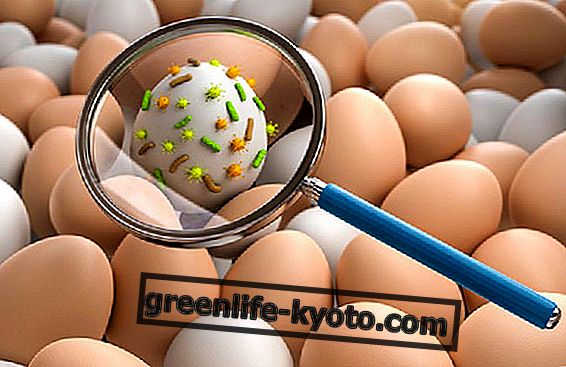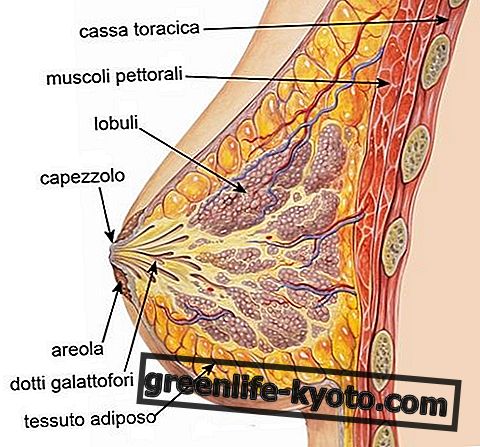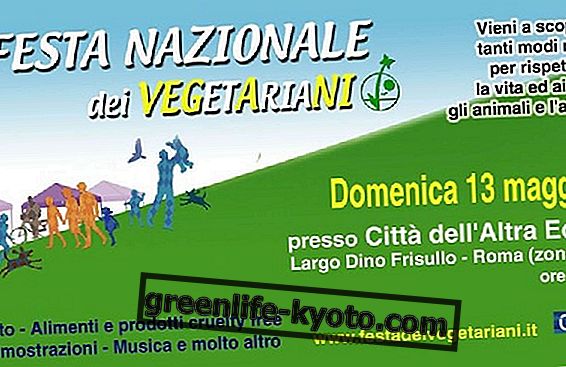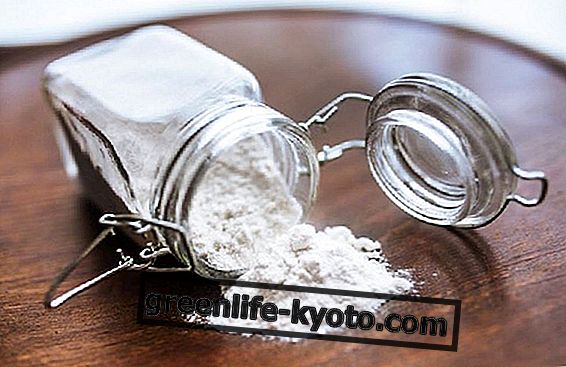
A study published May 12, 2014 in the journal Enviromental Health Perspective and conducted by the Silent Spring Institute identifies, among the potentially carcinogenic substances, the 17 most risky for breast cancer, those to which women are most commonly exposed, and tells us where They are.
The 17 substances at risk are found in many products: in cigarettes, in gasoline, in diesel fuel, in some solvents, in some foods and even in drinking water. In reality, in many cases these are more substances belonging to the same group. Let's see them one by one.
The 17 substances at risk
1, 3 butadiene. The exposure of the general population to butadiene occurs mainly through cigarette smoking, car exhaust gases and emissions from some types of factories, particularly those that produce rubber or process oil derivatives.
Acrylamides. They are mainly taken with cigarette smoke and diet, for example they are rich in chips and other foods with a high starch content, cooked at high temperatures. They contain some common products, such as diapers, and some substances used to treat drinking water, although in smaller quantities.
Aromatic amines. The aromatic amines are derivatives of ammonia and are many. The study we are talking about divided them into two groups:
- Group I: TDA (2, 4-toluilendiamine) and TDI (toluene diisocyanate)
- Group II: Aniline, benzidine and others.
The aromatic amines, overall, are found in many products, from sealants, to paints, to printer inks.
Benzene. Exposure occurs mainly through cigarette smoke, some solvents, car exhaust gases.
Halogenated organic solvents. They are found in many products, for example in many stain removers, gloves, degreasers, paint strippers ...
Ethylene oxide and propylene oxide. Exposure occurs mainly through cigarette smoking, some products used to sterilize, exhaust gases and paints.
Flame retardants and degradation products. They are found mainly in some plastics .
Heterocyclic amines. The exposure takes place through grilled meat .
Hormones and endocrine disruptors. They are found mainly in some hormonal drugs, consumer goods and chemicals with hormonal activity.
Non-hormonal drugs. The study we are talking about states that there are some non-hormonal drugs that can promote the onset of breast cancer; some are mentioned including furosemide (a diuretic), griseofulvin (an antifungal) and reserpine (antihypertensive and antipsychotic).
Parabens and breast cancer: is there a correlation?
MX . Exposure occurs through water treated with chlorine .
NitroPAH . In diesel engine exhaust gases.
OTA (ochratoxin A) . Ė a microtoxin produced by some fungi; it can be found in various foods, especially cereals, pork, nuts, cheeses, coffee and wine.
PAH . It is found in cigarettes, in car exhaust, in burnt food .
Perfluorooctanoic acid (PFOA) and other perflorinate compounds. PFOA is found in various objects of common use, for example in non-stick materials, fabrics used for clothing or home furnishings, drugs, lubricants, adhesives, cosmetics, insecticides .
Styrene . It is a substance used mainly in construction, in cigarettes, in some materials used for packaging .
Here, therefore, the incriminated substances which, on balance, are many more than 17 and above all they are everywhere; it is therefore practically impossible to avoid them. However, according to the Silent Spring Institute there are some ways to reduce exposure to carcinogens . Let's see what they are.
Ways to reduce exposure to carcinogens
- Limit exposure to exhaust gases of petrol and diesel cars.
- Use the hood when cooking and do not consume burnt food .
- Choose dry cleaners that do not use perchlorethylene or other solvents and prefer washing with water rather than dry cleaning.
- Use a carbon filter to keep the water used for drinking and cooking clean.
- Avoid the use of objects, finishes and coatings made with perflorinate compounds .
- Do not buy furniture and furnishing accessories in polyurethane and / or treated with fire retardants.
- The chemicals accumulate in the dust present in the house, so it is good to follow some hygienic rules such as keeping the house clean, taking off the shoes before crossing the threshold and, when passing the vacuum cleaner, use one with a HEPA filter, a filter with the ability to trap even very small particles that, with other vacuum cleaners, return to the home environment.
The information for the preparation of the following article was taken from the Silent Spring Institute website and from the article New Exposure Biomarkers as Tools For Breast Cancer Epidemiology, Biomonitoring, and Prevention: A Systematic Approach Based on Animal Evidence .













